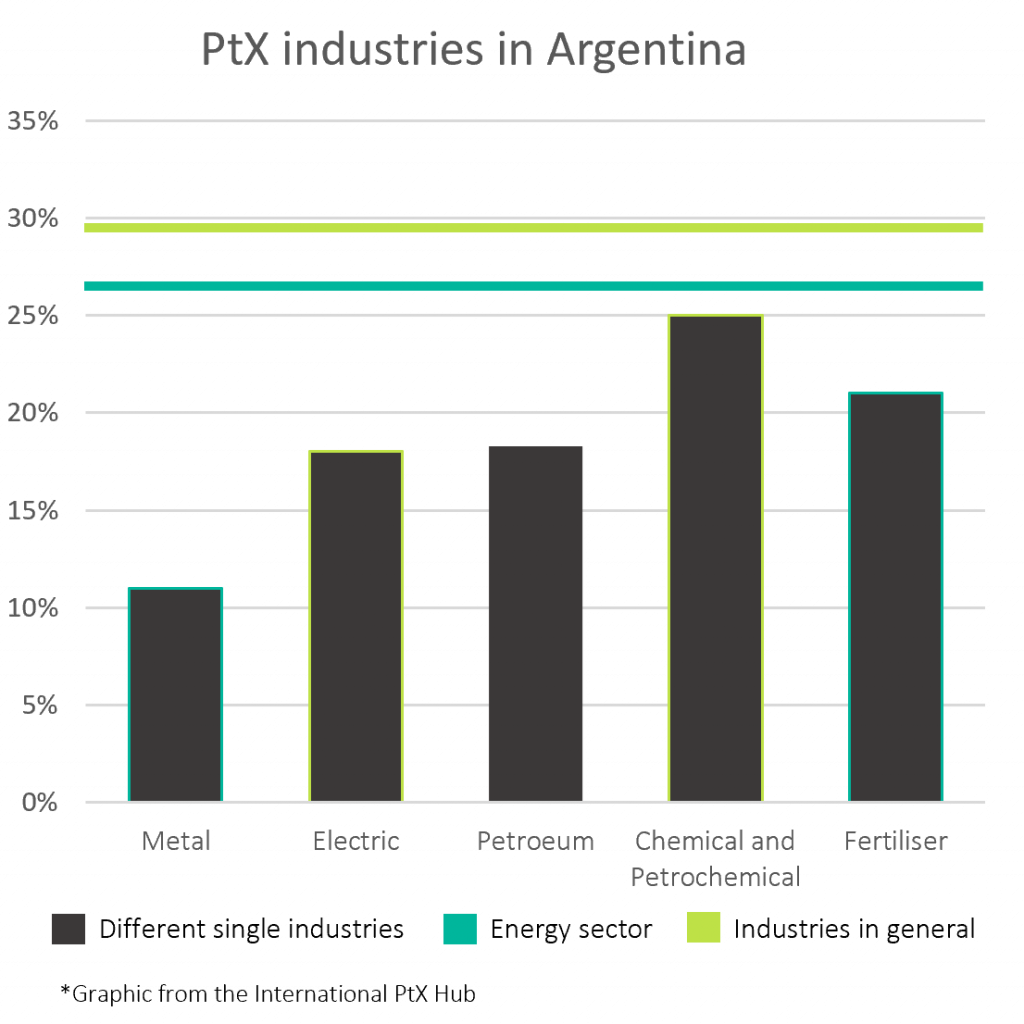Gender inequality has different ways of striking depending on the nature of the industry, each with their own educational and training requirements, the specific gender stereotypes according to different countries, or the positions within the organisation hierarchy among others. This last dimension was addressed in a previous article (Women in charge?: gender analysis on decision making in Argentina’s PtX industries), but are data from the green hydrogen related sectors in Argentina more optimistic at the staff/technical level?
Impact of the pandemic on the Argentinian professional market
Before diving into the specifics of the PtX industries, it is useful to provide an overview of gender equality in all sectors of the regional and national professional market. The pandemic brought up a brilliant opportunity to measure the precarity of those sectors where women develop their economic activity in Argentina. Domestic service, education, health, and social services employ a high percentage of women, and the workers of the former are the ones that experienced the strongest consequences during the pandemic. In the peak of the crisis, a third of the unemployed women belonged to the domestic service sector. While men’s rates of employment had already reached pre-pandemic levels in the first quarter of 2021, Argentinian women are still struggling to reach those levels.
In addition to this, once women find a job, one of the main problems they encounter is the pay gap. Among employed people in Argentina, for every 100 pesos that a man earns on average, a woman earns 79, and this gap worsens among women with lower levels of qualification.
These insights correspond to a regional phenomenon. According to the Inter-American Development Bank (IDB), 21% of the jobs held by women have higher chances of being automatised, meaning that millions of women in the region will be forced to re their professional careers. Against this context, the current transformation towards renewable energy, requiring new skills for employees, bring the opportunity to reverse this negative employment tendency. A reorientation towards more women in the energy sector can create a more equal workforce to respond to the climate crisis, and in particular, fuel the innovative emerging green hydrogen and PtX markets.
Women’s presence in Argentinian PtX key industries
However, there is still a long way forward to make it happen. Currently, women present only 26,5% in the Argentinian energy sector; lower than in the industrial sector in general, where it rises to 29,5%. The percentages are variable depending on the specific subgroups. The Argentine Association of Metal Industries (ADIMRA) claims that 11% of the employed staff are women; in the Electric Power Generation, Transmission and Distribution sector the data point to 18%, similar to the percentage shared by the Argentine Petroleum Institute (IAPG), who established that 18,3% of the oil and gas sector staff are women. This last percentage is not only below the regional medium, which is 21%, but also lower than the global one, which is 22%. Women represent 25 % in the chemical and petrochemical industry, and only 10 % in the steel and metallurgical industry.
According to its 2021 Sustainability Report, 21% of employees in the Argentinian fertiliser sector are women. However, when analysing the job positions, 38% of their technical staff, including engineers and analysts, are women. Every PtX industry has reflected a predisposition to include a higher number of women in departments related to sales and communications. However, this 38% reveal how at least one industry has corrected this tendency within its technical work force.

From quantitative to qualitative, gendered barriers in the PtX end-use industries
This information provides a relevant quantitative perspective on how equal the end-use sectors of green hydrogen are, but to have a more detailed representation it’s also important to consider qualitative parameters. Last year, the Boston Consulting Group (BCG) and the World Petroleum Council (WPC), jointly published the report “Untapped reserves 2.0: promoting gender balance in the oil and gas industry“. However, women and men in the industry continue to have different perceptions of the main professional challenges for women: in 2022, 63% of women and 41% of men feel women are being overlooked in the industry, up from 56% and 23% respectively in 2017. Given the evolution of both categories’ percentages, it can be assumed that this is moving from gendered to a general concern, becoming a widespread problem among workers. Despite this, it is undeniable that for women it goes beyond circumstantial discomfort, as it is a matter of structural inequality. As it is highlighted in the work “Gender and energy in Argentina: the participation of women in the electricity generation sector”, promoted by the Inter-American Development Bank (IDB), there are three main issues that need to be tackled to work towards more favorable conditions for women: “(i) adapt workplaces so that they are accommodating to both women and men, taking into account their differentiated needs; (ii) close wage gaps; and (iii) have recruitment, promotion, and professional training processes that consider stereotypes in the sector and from which women can benefit.”
This blogpost draws on a gender analysis for PtX in Argentina written by Veronica Chorkulak.
